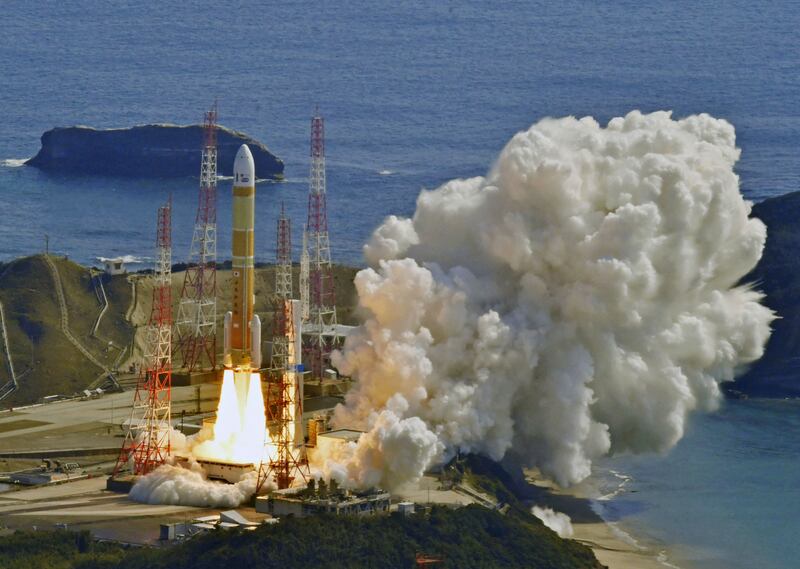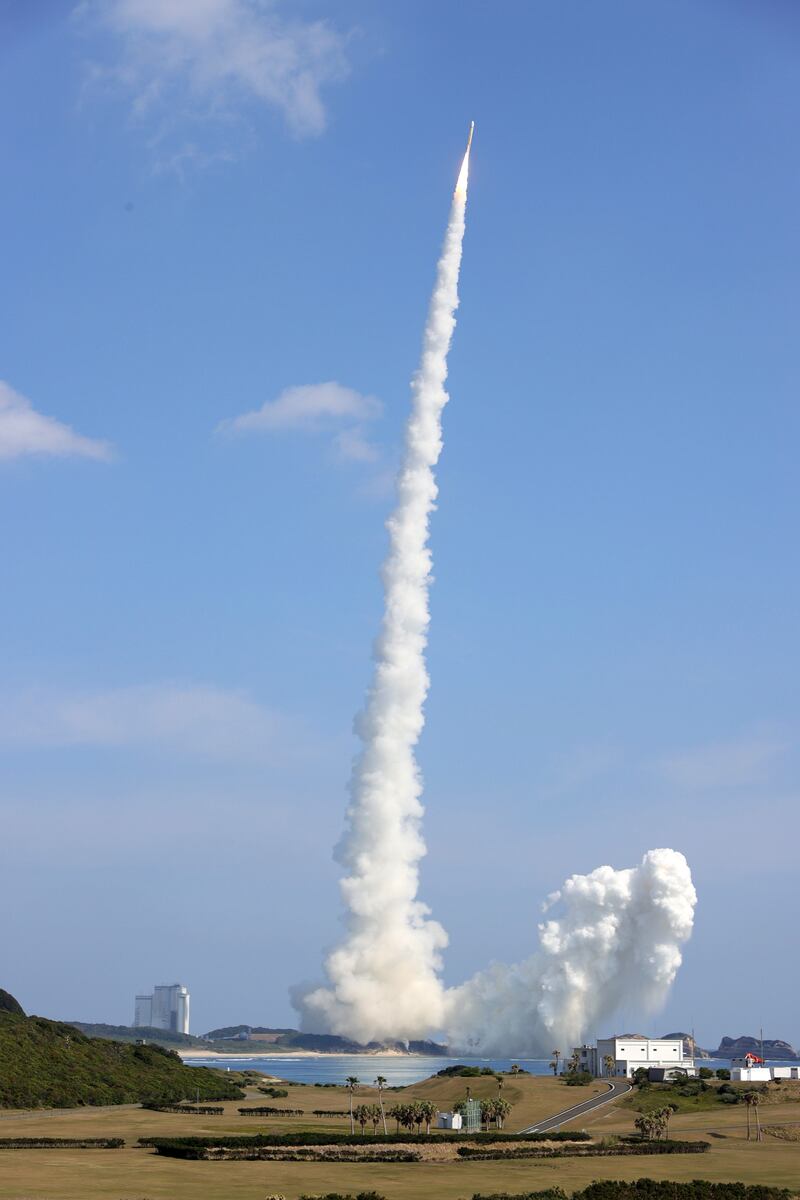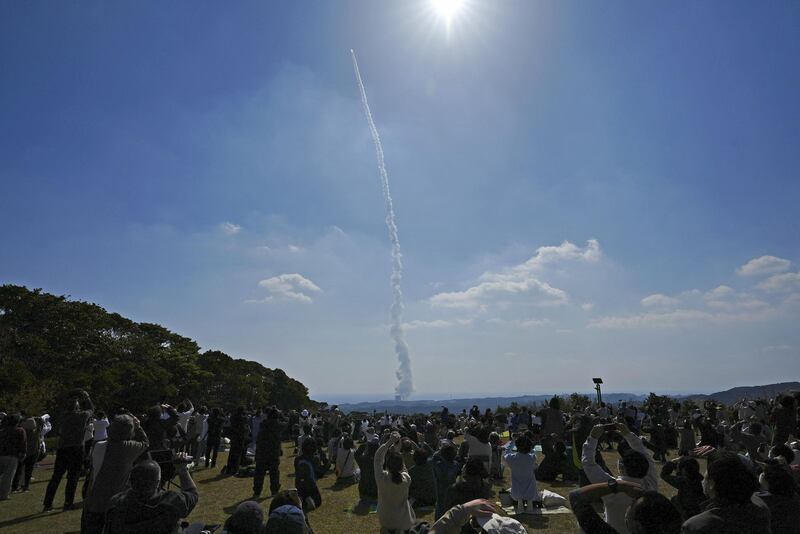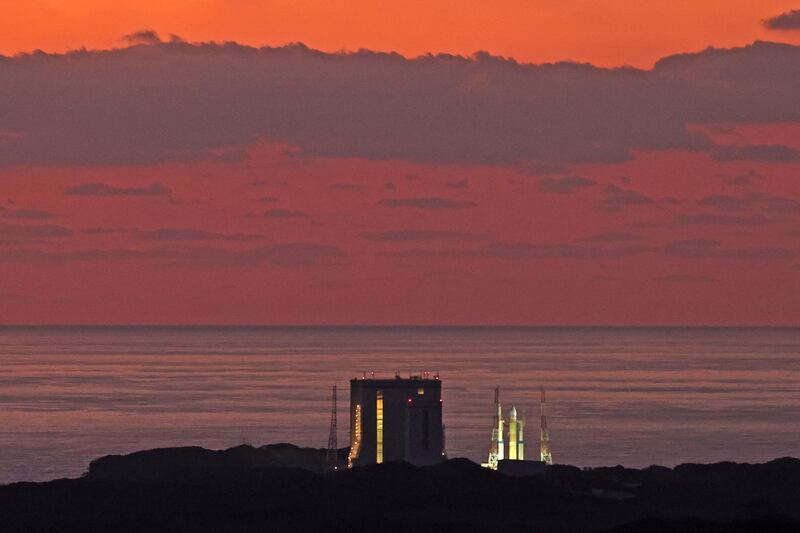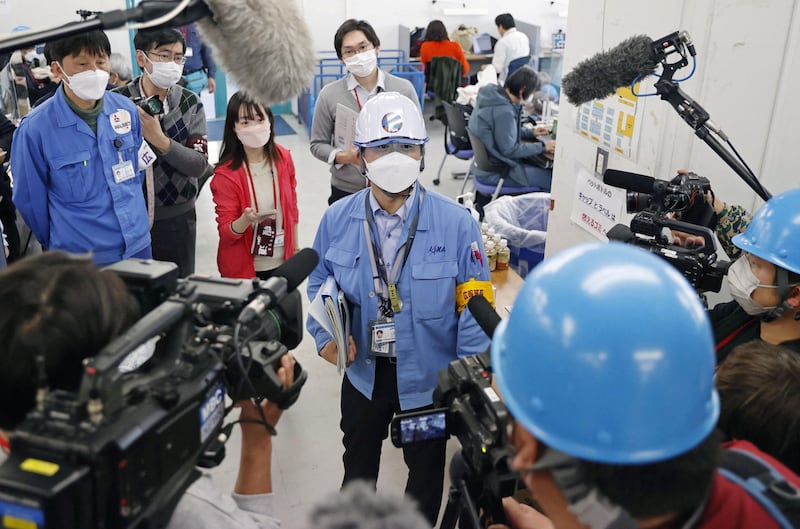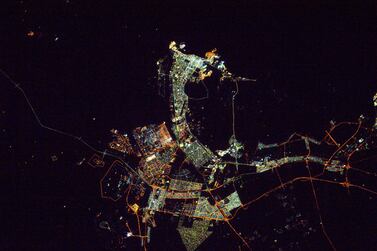Japan has destroyed a new rocket after one of the vehicle's engines failed to ignite.
The 57m H3 rocket lifted off from Tanegashima space port on Tuesday morning but received a self-destruct signal from Japan's space agency after a second-stage engine required to take it to its scheduled orbit failed.
The failed attempt, which follows an aborted launch last month, represents a big blow to the agency, which had suggested that the rocket made by Mitsubishi Heavy Industries (MHI) could be a cost-effective alternative in a growing global space industry market.
The rocket was carrying the Alos-3, a disaster management land observation satellite equipped with an experimental infrared sensor designed to detect North Korean ballistic missile launches.
Shares in MHI fell 1.8 per cent in morning trade.
A launch broadcast commentator from Japan's space agency said it had been decided that the rocket could not complete its mission, leading to the decision to send the self-destruct command.
“So, what happened? It's something we will have to investigate looking at all the data,” the commentator said.
Hirotaka Watanabe, a professor at Osaka University and expert in space policy, said that unlike the previous cancellation and postponement, “this time it was a complete failure”.
“This will have a serious impact on Japan's future space policy, space business and technological competitiveness,” Prof Watanabe said.
Elon Musk’s SpaceX has launched and remotely landed its Falcon orbital rockets since 2015.
Japan's H3 rocket has large parts that can be recycled and is more competitively priced, although the rocket cannot be landed and launched again.
Powered by a new simpler, lower-cost engine that includes 3D-printed parts, the rocket is designed to lift government and commercial satellites into Earth orbit.
It also meant to ferry supplies to the International Space Station.
As part of Japan's deepening co-operation with the US in space, the H3 is expected to eventually carry cargo to the Gateway lunar space station that Nasa plans to build as part of its programme to return people to the Moon, including Japanese astronauts.
MHI has estimated that the H3's cost per launch will be half of its predecessor, the H-II, helping it to win business in a global launch market increasingly dominated by SpaceX's reusable Falcon 9 rocket.
